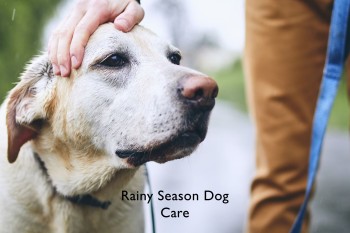Emergency First Aid for Pets at Home 🚑
As a pet owner, you never want to think about
your furry friend needing emergency first aid. But unfortunately, accidents and
illnesses can happen unexpectedly. Being prepared and knowing what to do in
these situations could help save your pet's life. This comprehensive guide will
provide you with the knowledge to administer emergency first aid to your cats,
dogs, and other small pets until you can get them to a veterinarian.
Creating a First Aid Kit for Pets
The first step in being prepared for a pet emergency
is putting together a well-stocked first aid kit. Here are some must-have
supplies:
·
Bandage material: Gauze pads, rolled gauze, stretchy self-adherent wrap, nonstick
bandages, adhesive tape. Learn how to
bandage wounds on pets.
·
Antiseptic wash: For cleaning wounds. Look for pet-safe options like chlorhexidine
or povidone iodine.
·
Triple antibiotic ointment: To apply to minor cuts, scrapes or abrasions after cleaning.
·
Styptic powder or pen: To stop minor nail bleeding if you trim the quick.
·
Rectal thermometer: To take your pet's temperature.
·
Eye wash: Sterile saline solution to flush eye irritations.
·
Milk of magnesia: To induce vomiting if your pet swallows something toxic. Always
check with your vet before giving.
·
Activated charcoal: Helps absorb toxins ingested by your pet. Give as directed by your
vet.
·
Tick removal tool: Safely removes embedded ticks from skin.
·
Blanket: To keep a shocky or injured pet warm.
·
Muzzle: In an emergency, protects you and others from a frightened pet who
may bite. Use a fabric one, not wire cage style.
·
Important phone numbers: Your vet, emergency vet clinic, poison control center.
Rotate perishable supplies to keep them fresh
and review the kit often so you remember how to use the items. Keep the kit in
an easily accessible place like a hall closet or kitchen pantry.
Assessing Your Pet's Condition
When faced with an emergency, try to remain
calm. Quickly follow these steps:
1. Ensure Your Own Safety
If your pet is panicking or aggressive, you
could get bitten or scratched. Use caution and a muzzle if needed before
attempting to handle them.
2. Check Your Pet's Vital Signs
Knowing some basic vital
signs for dogs, cats and other pets helps assess their condition:
·
Pulse: Feel the artery on the inside of the upper hind leg. Normal pulse
is 100-120 bpm for dogs, 120-140 bpm for cats. Fast pulse can indicate shock.
·
Respiratory rate: Watch flank movements for breathing rate. 15-30 breaths per minute
is normal for dogs, 20-30 for cats. Increased rate may signal respiratory
distress.
·
Temperature: Normal is 100-102.5°F for dogs, 100.5-102.5°F for cats. Temp over
103°F indicates fever, below 99°F is hypothermia.
·
Gum color: Bubblegum pink is normal. Pale gums or blue/white color is
serious.
If vital signs are abnormal, your pet requires
urgent veterinary care. Give first aid while someone calls the vet.
3. Identify the Type of Emergency
Some situations that require immediate first aid
response include:
·
Bleeding/hemorrhage
·
Burns, heat stroke
·
Choking/trouble breathing
·
Poisoning, toxin exposure
·
Shock or collapse
·
Seizures
·
Traumatic injury - hit by car, fall, attack by
another animal
Read on for how to provide first aid in these
scenarios before veterinary care is available.
Providing First Aid Based on the Type of Emergency
Bleeding/Hemorrhage
Serious bleeding injuries require quick action.
Apply direct pressure over the wound with a clean towel or gauze pad. If blood
soaks through, add more pads and continue pressure - don't remove the original
bandage.
If the wound is on a limb, you can use a stretchy
wrap to hold the pads in place and apply pressure. Wrap snugly, but not so
tight it cuts off circulation.
Seek veterinary help immediately, as
uncontrolled bleeding can quickly lead to deadly shock. If the wound is
spurting blood from an artery, apply pressure to the nearest pressure point
between the wound and the heart to slow blood loss.
Burns
Thermal or chemical burns require rapid cooling
and veterinary assessment. For mild thermal burns, flush the area immediately
with cool (not cold) water for at least 5 minutes to dissipate heat. Then cover
loosely with a clean, wet cloth. Keep your pet calm and call your vet.
For chemical burns, flush the exposed skin for
15-20 minutes with cool water to stop ongoing burning. If possible, determine
the chemical and advise your vet, as additional therapies may be needed based
on the substance. Loosely wrap the area with a clean, wet dressing and seek
immediate veterinary treatment.
Serious burns where the skin is broken or
charred call for veterinary assessment for pain management, wound care and
intravenous fluids.
Heat Stroke
With their thick fur coats, pets are prone to
overheating on warm days. Heat stroke signs include:
·
Excessive panting
·
Bright red gums
·
Tacky or dry gums
·
Vomiting, diarrhea
·
Wobbliness, stupor or seizures
Take quick action to gradually lower your pet's
temperature:
·
Move them to shade. Remove their collar.
·
Wet them down with cool (not cold) water.
·
Direct a fan on them to promote evaporative
cooling.
·
Offer small volumes of water if they can
swallow.
·
Massage legs and torso with cool, wet towels or
put cool (not cold) water foot soaks in a tub.
·
Transport them to an emergency vet without
delay.
Severe heat stroke can damage your pet's brain,
heart and kidneys. Rapid veterinary treatment is key to survival and reducing
lasting organ damage.
Choking/Trouble Breathing
Pets can choke on bones, balls or other objects
that lodge in their throat. Signs include pawing at the mouth, extreme
distress, cyanotic (blue) gums.
If the object is visible, you can sweep a finger
inside their mouth to try and dislodge it - but take care, they may bite down.
DO NOT perform blind finger sweeps, as you could push the object farther down
their throat.
Hold small pets upside down by their
hindquarters and give gentle shakes/back blows to try and dislodge the object.
For large dogs, perform doggie Heimlich maneuvers by standing behind them and
giving 5 firm abdominal thrusts with your hands closed into fists just behind
their ribs.
If you can't clear their airway, bring them to
an emergency vet immediately while continuing back blows/CPR enroute if your
pet loses consciousness.
For breathing troubles not caused by choking, watch
for increased effort or open-mouth breathing. This can indicate:
·
Asthma attack
·
Pneumonia
·
Heart failure
·
Anaphylaxis
·
Respiratory infection
Try to keep your pet calm. Transport to the vet
without delay for oxygen and medication. Trouble
breathing constitutes a veterinary emergency.
Poisoning
Pets explore their worlds with their mouths, so
poisoning accidents are common. Rodent bait,
antifreeze, human medications, toxic plants, and tainted foods are some of the
most common pet poisoning dangers.
Immediate veterinary help is critical for
suspected poisoning. If ingestion just occurred, call your vet first before
giving any home treatments. Based on the substance, the vet may advise:
·
Inducing vomiting with 3% hydrogen peroxide
·
Giving activated charcoal to absorb toxins
·
Starting IV fluids for support
Bring a sample of the toxin along with packaging
or the plant/object itself to help identify treatment options.
If you witness or strongly suspect poisoning,
don't wait for symptoms to develop. Call animal poison control at (888)
426-4435 for 24/7 emergency poison information and advice. Doing so quickly can
save your pet's life and reduce lasting impacts of toxins.
Shock or Collapse
Shock occurs when blood pressure drops
critically low, threatening organ perfusion. Causes include:
·
Trauma/blood loss
·
Toxin exposure
·
Severe reaction - allergy, envenomation
·
Cardiac or respiratory failure
Signs of shock include:
·
Weakness, collapse
·
Pale gums
·
Tachypnea/dyspnea
·
Tachycardia
·
Hypothermia
First aid for shock involves:
·
Stopping any bleeding
·
Keeping your pet warm but not overheated
·
Safe oxygen supplementation if possible
·
Transporting to veterinary care ASAP
Intravenous fluids, vasopressors, blood
products, and other medications are often needed to stabilize shock once you
arrive at the vet. Prompt action is key - delay can be fatal.
Seizures
Witnessing a pet seizure
can be frightening. Stay composed so you can provide care:
·
Clear the area around your pet of objects to
avoid injury
·
Cushion their head if on a hard surface
·
Do not restrain or put anything in their mouth
·
Note seizure start/stop time, limbs involved,
and what occurred before the seizure
·
When the seizure ends, keep your pet warm and
transport to the vet for evaluation
Take steps to minimize stress and stimulation.
Talk softly when seizures stop. Brief, isolated seizures may not require
medication if an underlying cause like toxin exposure is identified and
treated. Call your vet to report what happened for guidance. Multiple or
prolonged seizures constitute an emergency requiring urgent veterinary
assessment and anticonvulsant drugs to prevent continuous seizures (status
epilepticus), brain damage or death.
Traumatic Injuries
Car accidents, bites, falls from heights, and
other impacts often cause serious traumatic injuries in pets. Approach with
care, as injured pets may bite in panic. Use a muzzle if needed for your
protection.
If injuries seem severe (compound fractures,
heavy bleeding, paralysis, uncontrolled pain), cover/wrap the pet loosely to
minimize shock and transport them to emergency veterinary care immediately
without attempting home treatment. Support broken legs if possible.
For less severe trauma like cuts, lameness or
minor abrasions, you can provide first aid including:
·
Stopping bleeding with direct pressure over
gauze pads
·
Immobilizing/splinting fractures with cardboard,
magazine or other rigid material
·
Flushing wounds with sterile saline
·
Applying sterile bandages over injuries
Your vet can provide pain relief, suture
lacerations, splint fractures, and take x-rays to fully assess traumatic
damage. Head/spinal trauma requires veterinary evaluation for concussion,
hemorrhage and fracture. Don't give your pet any medications without veterinary
guidance, as these can mask symptoms.
Regardless of severity, try to keep injured pets
restricted and calm to avoid worsening damage before you can get them to the
vet. Transport as soon as you can safely do so.
When to Seek Emergency Veterinary Care Immediately
In some cases of pet emergency, minutes matter.
Rush to emergency veterinary care without delay if your pet has:
·
Agonal or obstructed breathing
·
Uncontrolled bleeding
·
Seizures lasting >2-3 minutes
·
Unconsciousness or severe collapse/shock
·
Severe Burns
·
Major traumatic injury - hit by car, fall from
height etc.
·
Known or suspected toxin ingestion
·
Sudden paralysis or inability to use limbs
·
Profuse vomiting/diarrhea with shock
·
Active labor over 1 hour without puppy/kitten
Calling ahead allows the veterinary team to be
prepared with trauma treatments when you arrive. If possible, have someone else
drive so you can monitor your pet enroute.
Even if you can’t get to your regular vet, most
areas have 24-hour emergency veterinary clinics. Know where your closest
options are located in case an after-hours crisis strikes. Having the address
or phone number saved in your contacts, or GPS pre-programmed can save critical
time.
When every minute counts, prompt emergency vet
access gives your pet the best chance of survival and full recovery from a
life-threatening illness or injury. Don’t take “wait and see” approaches in
acute emergency scenarios - seek veterinary help without delay.
Caring for Your Pet After a Crisis
Once your pet is stable, they will likely need
some extra TLC as they recover. Monitor them closely and follow all veterinary
discharge instructions carefully. Typical recuperation steps include:
·
Confine activity: Restrict exercise and access to stairs/furniture so they rest. Use
baby gates, pens or closed rooms. Keep dogs leashed when outside.
·
Prevent licking/chewing
bandages or wounds: Use an e-collar if needed. Watch for signs
of infection - redness, swelling, discharge.
·
Give all medications as
directed: Complete any prescribed course of
treatment. Store safely out of pet’s reach.
·
Support comfortable eating: Offer softened food raised up on dishes. Avoid gulping.
·
Monitor incisions: Check surgical sites twice daily for redness/swelling/discharge.
Contact vet if concerned.
·
Check temperature: Fevers can indicate post-op infection or other complications.
Report elevated temps promptly.
·
Help with physical needs: Assist pet to stand for bathroom breaks. Change bedding if they
have accidents.
·
Restricted bathing: Discuss with your vet when bathing can resume. Stitches may
require protection.
·
Watch appetite and energy
levels: Report decreases which could signal
illness or pain needing more intervention.
·
Give prescribed pain
medication: Even if your pet seems okay, stay on
schedule to keep them comfortable.
·
Attend recheck exams: Your vet will want to assess healing progression and make sure
recovery stays on track.
Caring, observant owners like you are your pet’s
best advocate during convalescence! Report any concerns promptly. With time and
patience, your furry companion will be back to their happy, healthy self thanks
to you seeking emergency veterinary care when it mattered most.
Closing Thoughts
Seeing your beloved pet suffer a sudden injury
or illness is very distressing. Having the knowledge and supplies to provide
emergency first aid could help save their life in the critical moments before
you can access veterinary care. Keep a well-stocked kit, know your closest
emergency vet options, and familiarize yourself with how to assess and help
stabilize your pet’s condition. Your quick intervention could give them the
best odds of full recovery so you have more happy years together ahead. Stay
calm, trust your instincts, and don’t delay when an emergency strikes!

















